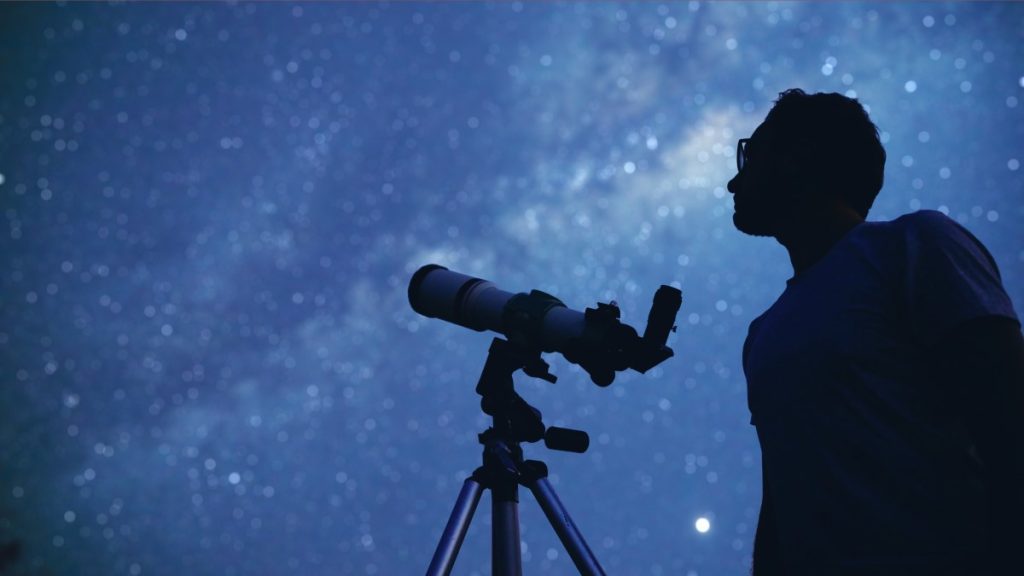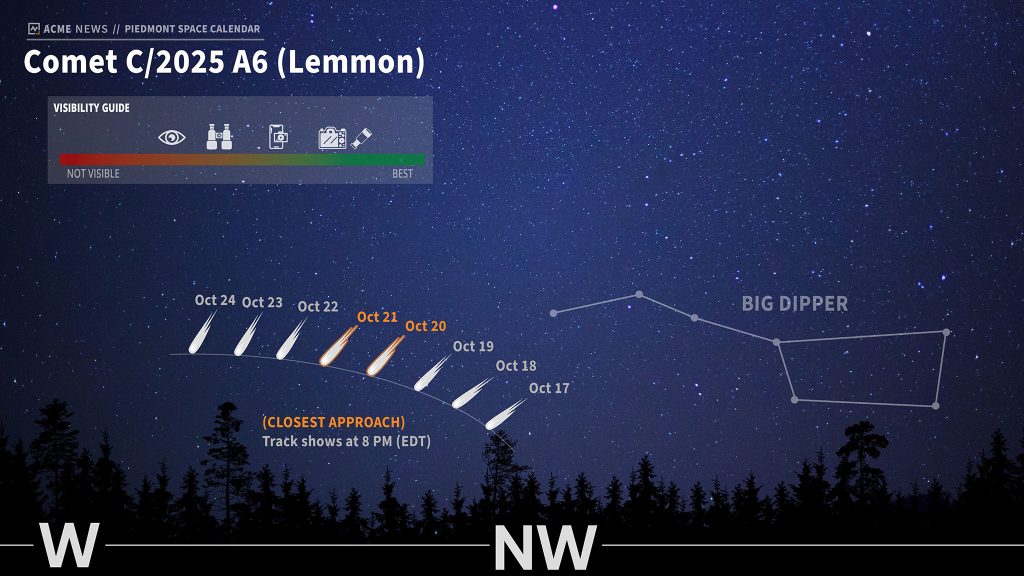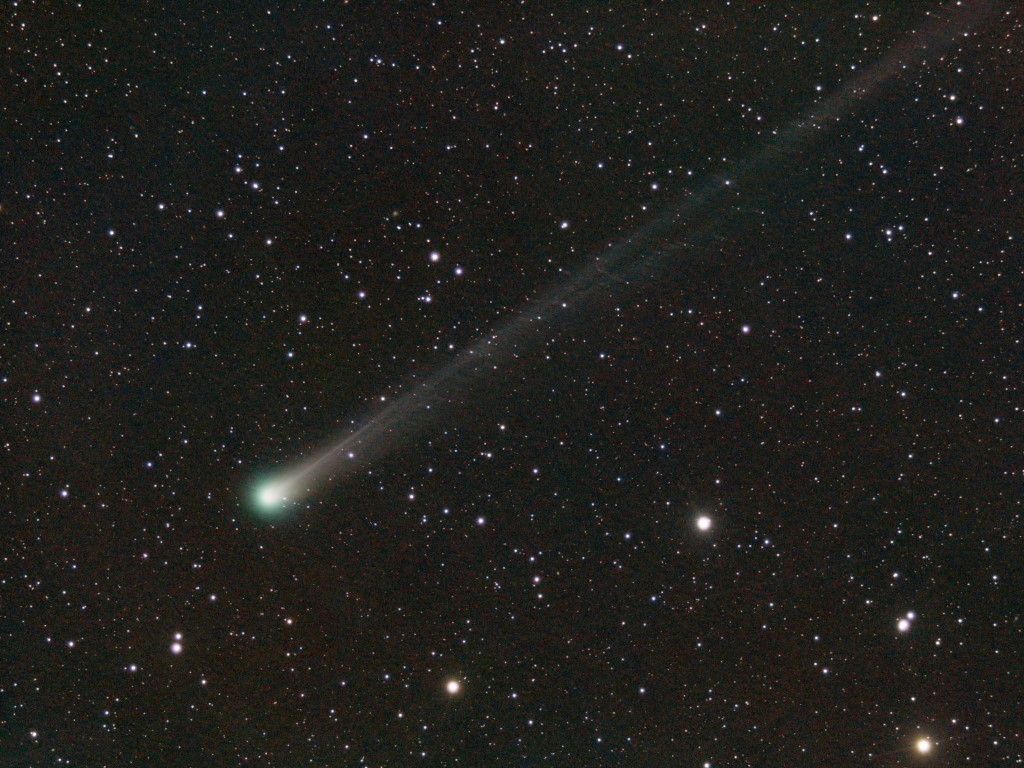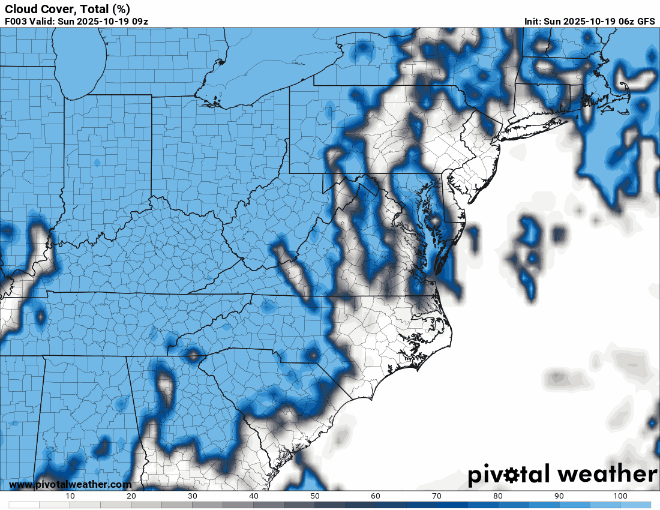
ASHEBORO, N.C. (ACME NEWS) — Stargazers across the North Carolina Piedmont could be treated to a rare celestial lineup this month: two visiting comets and a meteor shower all visible Monday and Tuesday nights.
Comet C/2025 R2 (SWAN) and Comet C/2025 A6 (Lemmon) will make their closest approaches to Earth on Oct. 20 and 21, respectively — coinciding with the Orionid meteor shower’s peak nights.
Comets are icy bodies of dust and rock from the outer solar system that develop glowing tails when sunlight warms their frozen surfaces. Comet Lemmon, discovered in January by the Mount Lemmon Survey in Arizona, is expected to be the brighter of the two—faint but possibly visible to the naked eye under dark rural skies at around magnitude +3 to +4. Comet SWAN, discovered in September by NASA’s SOHO spacecraft, will likely be dimmer—about magnitude +6—and will require binoculars or a small telescope for a good view.
Both are long-period comets, meaning it may be hundreds or thousands of years before they return.
When and where to look

For Piedmont observers, both comets will appear in the western sky shortly after sunset. On Oct. 20–21, sunset will occur around 6:35 p.m., with the best viewing between 7:30 and 9:30 p.m.
Comet Lemmon will appear in the northwest, just west of the Big Dipper near the constellation Boötes. Comet SWAN will be positioned farther to the southwest and higher in the sky.
The Orionid meteor shower, produced by debris from Halley’s Comet, will peak Oct. 20–21. Meteors will appear to radiate from the constellation Orion, which rises in the east around 11 p.m. and climbs higher toward midnight. Find the red supergiant Betelgeuse, the right shoulder of Orion.
Under dark skies, observers could see 10 to 20 meteors per hour. This year, the Orionids peak will coincide with the new moon, keeping skies dark and improving visibility for both comets and meteors. As a bonus, look slightly east to see Jupiter, which will appear as the brightest ‘star’ in the sky. Since planets don’t ‘flicker,’ it should be easy to find the largest planet in our solar system. Apps such as Stellarium or Sky Tonight can help pinpoint their locations by using your phone’s screen and sensors to overlay the sky in real time.
What you’ll see
With the naked eye, Comet Lemmon may appear as a faint, hazy patch of light in the west after dusk — subtle, but visible if you know where to look. Comet SWAN will likely be too dim without some extra help from binoculars, a camera, or a telescope. As with all comets, brightness predictions are uncertain and can change.
The darkest skies in Randolph County are found in the southern part of the county, especially near the Uwharrie National Forest, but even getting just a few miles outside the city will improve visibility significantly.

(Dimitrios Katevainis via Flickr / CC BY-SA 4.0)
Through binoculars, both comets should resemble soft, round glows, and sharp-eyed viewers may notice a faint tail pointing away from the Sun. If you don’t have a pair of binoculars, one easy way to catch a glimpse is using your smartphone camera on a tripod, which can capture more than your eyes can see.
Try using:
- Night mode or astrophotography mode, if available.
- Exposure between three and ten seconds.
- Wide-angle framing to include stars or meteor trails.
- Manual focus to infinity for sharper results.
- Including the horizon, trees or buildings in the frame can help show scale and give your photo a sense of place.
“The cameras in recent cell phones are extraordinary, providing outstanding pictures with minimal skill, and there are several astrophotography apps available for both Android and iPhone. In fact, there is an entire sub-genre of astrophotography focused on cell phones, with plenty of information online,” says Christopher Rowe, a NASA/JPL Solar System Ambassador and president of the Greensboro Astronomy Club. “The bottom line is you don’t need thousands of dollars of equipment to have beautiful and lasting reminders.”
Forecast and viewing conditions
Weather conditions look favorable for those nights, says Ethan Clark, owner and founder of North Carolina’s Weather Authority.
“Lows will fall into the 40s overnight, with temperatures in the 50s after sunset. Dry air will make the night sky even clearer, and mostly clear conditions are expected as of now.”
“We are lucky this year because the new moon is the same night as the Orionids peak. With no moonlight, meteors will be easier to spot,” says Rowe. “The best time for viewing will be after midnight. Be sure to give your eyes time to adjust to the darkness.”
A chance for everyone to look up
This week’s alignment isn’t just for astronomers or photographers. Weather permitting, it’s a rare chance for anyone to spend a few quiet hours under the stars — to disconnect from screens, enjoy the crisp fall air and take in the free show the night sky is putting on.
Both comets will fade as they move away from Earth later this fall, but for a few nights in late October, the North Carolina sky will offer a gentle reminder of the wonder waiting overhead.
“Take the opportunity to relax and enjoy the night sky. Try to find other nearby deep–sky wonders. For example, if you are looking at Comet Lemmon, look above it at the handle of the Big Dipper, specifically the middle star. This is actually a double star system, consisting of Mizar (the brighter of the two) and Alcor; in fact, each is itself a binary pair. See if you can ‘split the double’”.
—
A special thanks to Christopher Rowe, who provided comments and input for this article. Rowe is a NASA/JPL Solar System Ambassador and president of the Greensboro Astronomy Club. He is the founder of AstRowe Education, which supports astronomy outreach in the community.
Additional thanks goes to Ethan Clark, owner and founder of North Carolina’s Weather Authority, for his fast response helping with forecast predictions.
###


